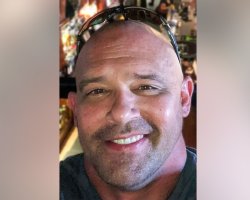A Story at the Tragic Heart of our Opioid Epidemic
Sometimes, the stories I come across as I research addiction and recovery are so painful, I can’t write about them immediately. I encountered one such story a few weeks ago, the story of a man in his 30s who died in the ER from a heroin overdose. But the story doesn’t play out like most people might expect it to. This terribly tragic tale shines a light right at the very heart of our very widespread problem with opioid addiction.
The story is told by the chief medical resident at the University of Louisville in Kentucky. He describes the way he became interested in the case of a man with a history of heroin use who arrived at the ER struggling to breathe. Naloxone revived him briefly but his heroin use had caused his lungs to fill with fluid. As ER staff were preparing to take extreme measures to save his life, the man died.

Now, this man’s death occurred in the Ohio River Valley, one of the hardest-hit parts of the country when it comes to opioid overdose losses. This doctor could have just dismissed this case as one more person who lost their way and became immersed in drug abuse. But one fact caught his attention.

When he looked through the man’s medical records, he noted a fracture of the left tibia and femur earlier in 2017. The medical notes said that the man had been walking near his home with his children when a drunk driver jumped the curb and swiped him. The injury was repaired, the man went to physical rehabilitation and all should have been good. Except it wasn’t.
He was prescribed oxycodone for the pain. The prescription was supposed to last for just seven days and then he ought to have been switched to a non-opioid painkiller. But that didn’t happen. The state prescription drug monitoring system showed that someone kept prescribing opioid pain medication after this point.
At that point, everything crumbled pretty quickly. His wife stopped going to doctor’s appointments with him. He was labeled a drug-seeker and probably, his prescriptions were cut off right at that point. Since he showed up in the ER with a history of heroin use, apparently his addiction drove him to the streets in his desperate search to avoid the agony of withdrawal.
The chief medical resident went a step further and checked public court records. In this same time period, the man got divorced. A month later, he died in the ER.
In life, there is no rewind button. There’s no way of going back in time to change just one little thing that eventually dominoes into the complete destruction of a person’s life.
- If he had just not been walking on that sidewalk…
- If a doctor had not been a little too willing to prescribe opioid painkillers…
- If the medical staff who labeled him a drug-seeker had done the right thing and helped wean him off opioids so he could get his life back…
- This family might still have their father.
This is why it’s so destructive to label and condemn a person who finds themselves addicted. If we had been in that person’s shoes at a critical moment, it could have been any one of us arriving in the ER with our lungs filled with fluid. The right thing to do is steadfastly offer help, no matter what the person says or how vigorously he or she rejects the help. NO ONE wants to be an addict. NO ONE wants to be addicted, no matter what they say. This story reveals one man’s unwilling descent into life-ending addiction and his loss is a sobering lesson for all of us.


 ®
®